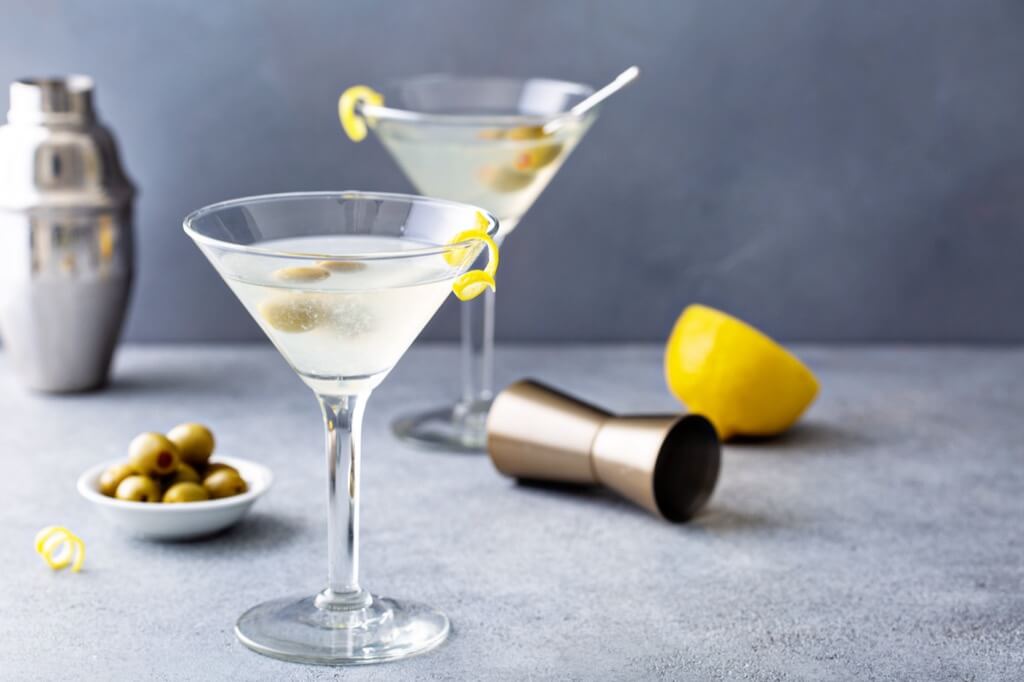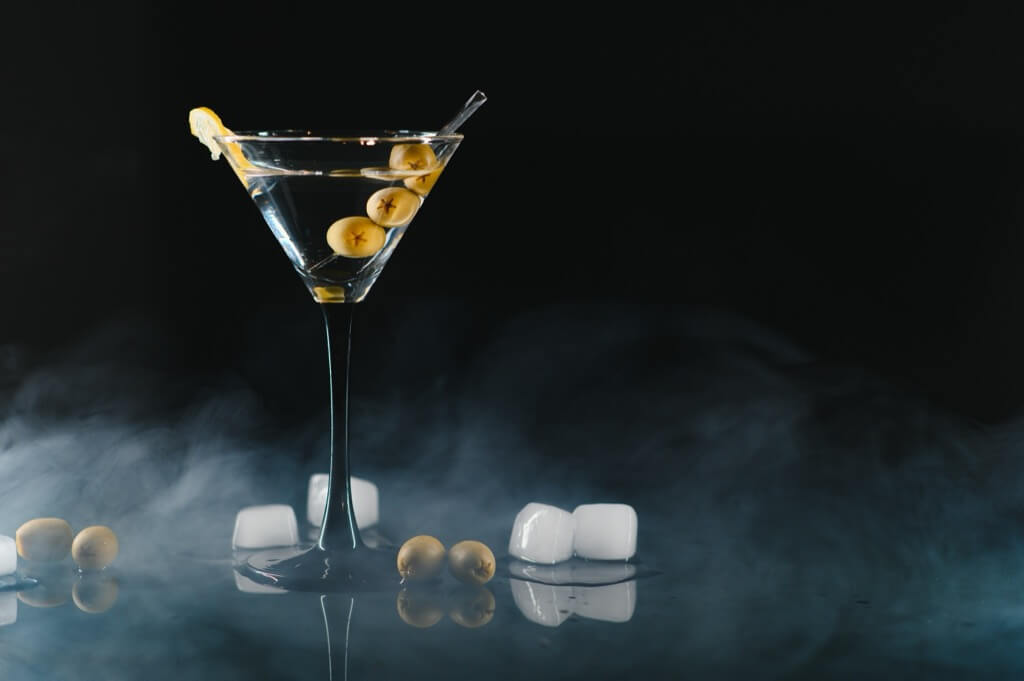Imagine walking into a plush, dimly lit lounge, the air buzzing with anticipation for an evening of refined sipping. It’s a world where a $45 price tag on your cocktail prompts a chuckle, not because of the absurdity, but because you’re about to understand the alchemy that justifies such a cost.
The $45 Question: Luxury or Capitalism at Play?
Finding myself nestled in the elegant embrace of Ilis’ lounge, the shock of discovering my Citrus Martini carried a hefty $45 price tag set off a whirlwind of thoughts. This wasn’t just any Martini; it was a concoction of Japanese gin and shochu, adorned with a citrus medley, and served in a bottle that seemed to stretch towards the heavens. But does this foray into luxury signify a genuine elevation of the Martini, or is it merely establishments seizing the opportunity to profit from the drink’s mystique?
A Martini’s simplicity leaves no room for error; its elegance lies in its minimalism, perhaps a reason we feel inclined to indulge at upscale bars. Yet, amidst our maximalist era, the draw towards pricier variants is undeniable, but it begs the question: Are we simply fueling a capitalist machine, or is this the price of admission to the Martini renaissance?
The Allucid Citrus Martini
The allure of the Citrus Martini, crafted with Ki No Bi gin, is undeniable. Its unique citrusy and pine-aged notes demanded a cocktail that could live up to its potential. This wasn’t about upselling a standard Martini; it was about creating an experience, a narrative told through shochu, pine tincture, and locally sourced citrus. But when the economics of cocktail crafting come into play, things get interesting. With ingredient costs pushing the pour cost to an eyebrow-raising 22%, the dilemma between maintaining quality and meeting economic realities becomes apparent.
The Concept of “Distance Luxury”
The concept of “Distance Luxury,” particularly in the context of high-end Martinis and other premium beverages or services, encapsulates the idea of creating a sense of exclusivity and uniqueness through geographical, cultural, or production-related distances. This notion leverages the rarity, origin, or craftsmanship of an ingredient or product to elevate its perceived value and desirability among consumers. Here’s a breakdown of how “Distance Luxury” plays out, especially in the world of upscale cocktails and spirits:
Luxury items often derive a significant part of their allure from their place of origin. For instance, a Martini crafted with Japanese gin and shochu carries with it the mystique and prestige of Japanese distilling traditions and ingredients that may not be readily available elsewhere. This geographical distance creates a narrative of rarity and exoticism, making the drink more appealing to those seeking a unique experience that transcends the ordinary.
Cultural distance refers to the uniqueness and allure of products or ingredients that come from a distinct cultural background, different from the consumer’s own. The use of traditional or artisanal methods in the creation of spirits, such as the use of pine-aged flavors in gin or the incorporation of shochu, introduces consumers to new taste profiles and experiences.
This aspect of “Distance Luxury” focuses on the meticulous and often labor-intensive processes involved in creating a product. The use of high-quality, hard-to-find ingredients, like Alba white truffles or saffron-infused gin, not only adds to the cost but also the narrative of the cocktail. The distance here is between everyday, mass-produced items and those that require significant time, effort, and skill to produce. The craftsmanship involved in distilling premium spirits or infusing them with exotic flavors creates a perceived distance between these luxury items and their more commonplace counterparts.
You will often find spirits like the Ki No Bi gin, part of cocktails that cost up to $250. From Manhattan to San Francisco, the narrative is similar: premium ingredients, rare garnishes, and the quest for an unparalleled drinking experience justify these prices. Whether it’s a Martini accented with saffron-infused gin or adorned with Alba white truffles, the message is clear—these are not just drinks; they’re culinary masterpieces.
Are Garnishes the Hidden Culprits?

Often, it’s the seemingly minor details—garnishes and sidecars—that catapult the price of these luxurious libations. From caviar-stuffed olives to truffle-infused extras, these additions transform the Martini from a mere cocktail to a multisensory experience. Yet, as prices soar, one wonders where the line between essential enhancement and extravagant excess lies. These could be the potential culprits:
- Caviar-Stuffed Olives A classic Martini garnish taken to opulent heights, caviar-stuffed olives combine the briny depth of olives with the luxurious texture and taste of caviar. This fusion not only adds a touch of sophistication but also significantly raises the price due to the high cost of quality caviar.
- Truffle-Infused Extras: The inclusion of truffles, whether as an infusion in the Martini itself or as a lavish garnish, introduces an earthy complexity to the drink. Truffles, known for their rarity and fetching high market prices, can transform a simple Martini into a decadent affair, reflected in its price.
- Gold Leaf: For those seeking the ultimate in luxury, gold leaf garnishes offer a visually stunning and extravagant touch. While edible gold has no taste, its inclusion symbolizes peak opulence, adding a considerable amount to the cost of a Martini for the sake of visual appeal and status.
- Edible Flowers: While not as expensive as some other garnishes, edible flowers can still elevate the cost of a Martini. Their delicate beauty and subtle flavor nuances add a layer of sophistication and artistry to the presentation, making the cocktail not just a drink but a piece of edible art.
- Exotic Fruit Peels: Exotic fruit peels like yuzu, bergamot, or kumquat can add unique flavor profiles and aromas to a Martini. These fruits, often imported and less commonly available, can contribute to the drink’s exotic allure and higher price point.
- Cheese-stuffed olives: Taking the savory route, cheese-stuffed olives, particularly those filled with high-quality or artisan cheeses, offer a rich, creamy counterpoint to the sharpness of the Martini. While cheese itself may not be exorbitantly priced, artisan varieties used in premium cocktails can add to the overall cost.
- Sidecars of Premium Spirits: Offering a sidecar of additional premium spirits or liqueurs to complement the Martini introduces another layer of customization and luxury, allowing drinkers to adjust the strength and flavor profile of their cocktail. This extra shot of high-end liquor, however, also contributes to the drink’s elevated price.
Having gone through the reasons why luxury martinis are so expensive, is it worth shelling out nearly half a hundred bucks for a luxury Martini a ticket to a transcendent tasting experience, or just a fancy way to light your money on fire?
In essence, the choice boils down to personal value versus extravagance. If the thought of a saffron-infused gin Martini sends your heart racing, and you can practically taste the adventure before the glass touches your lips, then yes, plunge into the deep end of luxury. But if you find yourself shrugging at the glitter and still relishing a well-made, “ordinary” Martini just as much, then perhaps the high-flying world of luxury Martinis, with all its trappings, might not be where you need to land to find your cocktail bliss. After all, the best Martini might just be the one that brings you joy, no gold leaf is necessary.

